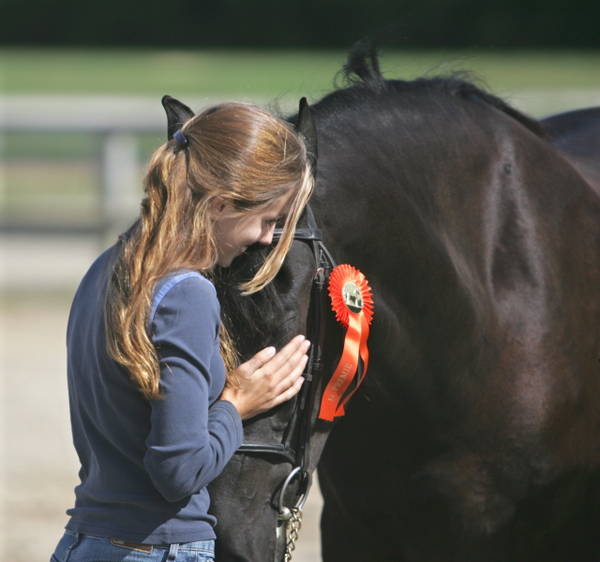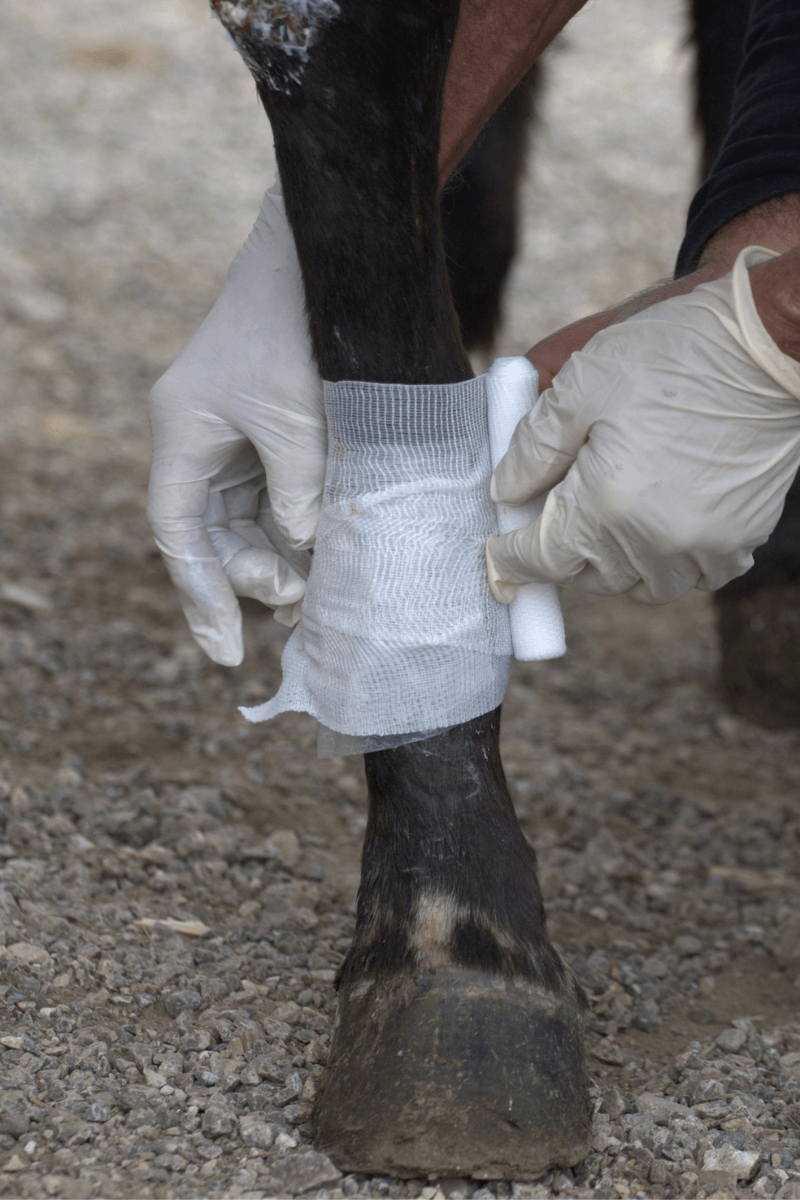When you purchase something using the retail links in our posts, we may earn a small commission.
We love our horses and their antics, but sometimes their games result in injuries and accidents. Being prepared with a fully-stocked equine first aid kit will enable you to respond quickly to any horse emergency at your barn or on the road. The items in your first aid kit will vary a little depending on your setup, your horse, how often you travel, and the level of comfort and experience you have handling emergencies.
Health Records
In addition to the essentials listed below, it is very important to have your horse’s health records on hand during an emergency. This is even more important if you are boarding and may not be on-site during an emergency.
Not sure where to get started with horse health records? Try our Free Horse Record Tracker!
Storage
You’ll need to store your supplies in a waterproof case or carrier. We have a tote with a handle to keep our items mobile and accessible wherever we need them….because an injury almost never happens right next to your tack room. If you don’t know normal equine vital signs by heart, print them off and tape them inside your first aid kit. Aside from knowing whether the vitals are outside of normal, your vet is going to ask as soon as you call them.
In Arizona, hot weather is the biggest concern for medicines, but in most places worry about freezing is more common. Either way, move your first aid kit inside during extreme hot or cold temperatures to prevent damage to your supplies or medications.
Here is the list of items we keep in our equine first aid kit. We purchase most of these items online, at the feed store, or in the case of medications from our veterinarian.
First Aid Kit Essentials
- Thermometer: you can use a digital or analog thermometer. I prefer a digital thermometer, but make sure to check your batteries on a regular basis.
- Stethoscope: this can be handy for getting a pulse or for listening to gut sounds. Make sure you are comfortable identifying normal gut sounds prior to an emergency. Once you are familiar with normal sounds, it is easy to hear when something is off.
- Notebook & Pen: this may seem like an odd thing to keep in your first aid kit, but hear me out. You’ll need to write down any information that might help your vet during an emergency. For example, what were your horse’s vitals an hour ago and how do they compare to now. When did you give medication? These are important items that your veterinarian will need to know.
- Vet Wrap: an absolute must-have at our barn and it has the added bonus of being versatile. It is a great top bandage for small-medium size wounds and works great as a tail wrap for pregnant mares. With the heat in Arizona, we have to be cautious as heat tends to stick the layers together. This gets stored inside during the summer heat.
- Adhesive Bandage Tape
- Absorbent Cotton Roll: great for cleaning and dressing wounds. I really like this for cleaning as you can break it into whatever size you need.
- Non-Adhesive Wound Pads: the 4” pads are a good all-purpose size to have on hand.
- Blunt End Bandage Scissors: these are helpful when removing bandages, too.
- Antimicrobial Scrub: for cleaning out wounds. I prefer betadine scrub compared to diluted iodine. The scrub lathers up well. (This also works wonders on cleaning white horses, FYI!)
- Rubbing Alcohol: this is handy for prepping injection sites or a quick hand cleaning. You can get this really cheap at your local pharmacy.
- Wound Dressing: we keep two different types of dressing on hand and it really depends on what type of wound and how inquisitive your horse is on which we use.
- Gloves
- Eye Ointment: we get this from our veterinarian. We have one mare who gets runny eyes during spring bloom and this is invaluable for keeping her comfortable.
- Oral Syringes/Injectable Syringes: whether you stock oral syringes, injectable syringes, or both will depend on your comfort level. If you are not confident giving injections, you shouldn’t stock injectable syringes (unless you have someone else in the barn to do it for you).
- Clean Towels: various sizes are nice to have on hand for different uses. We stock up on WAY more of these for foaling. Check out our Preparing for a Foal article if you are putting your foaling kit together!
- Medications: this will vary depending on your vet’s recommendation and your horse. We like to keep Bute and Banamine on hand for minor injuries or colic.

I’ve been around horses my entire life, but my Friesian journey started just over 20 years ago. Our horses have always been a part of our family. They have traveled with us as we relocated from Vermont to New York to Iowa and finally, to Arizona. I can’t wait to share our story with you!
Related
Mar 24, 2021
Building a Horse First Aid Kit with Items You Actually Need

Leave a Reply Cancel reply
@starlitridgefriesiansandfells
LET'S BE FRIENDS ON INSTAGRAM